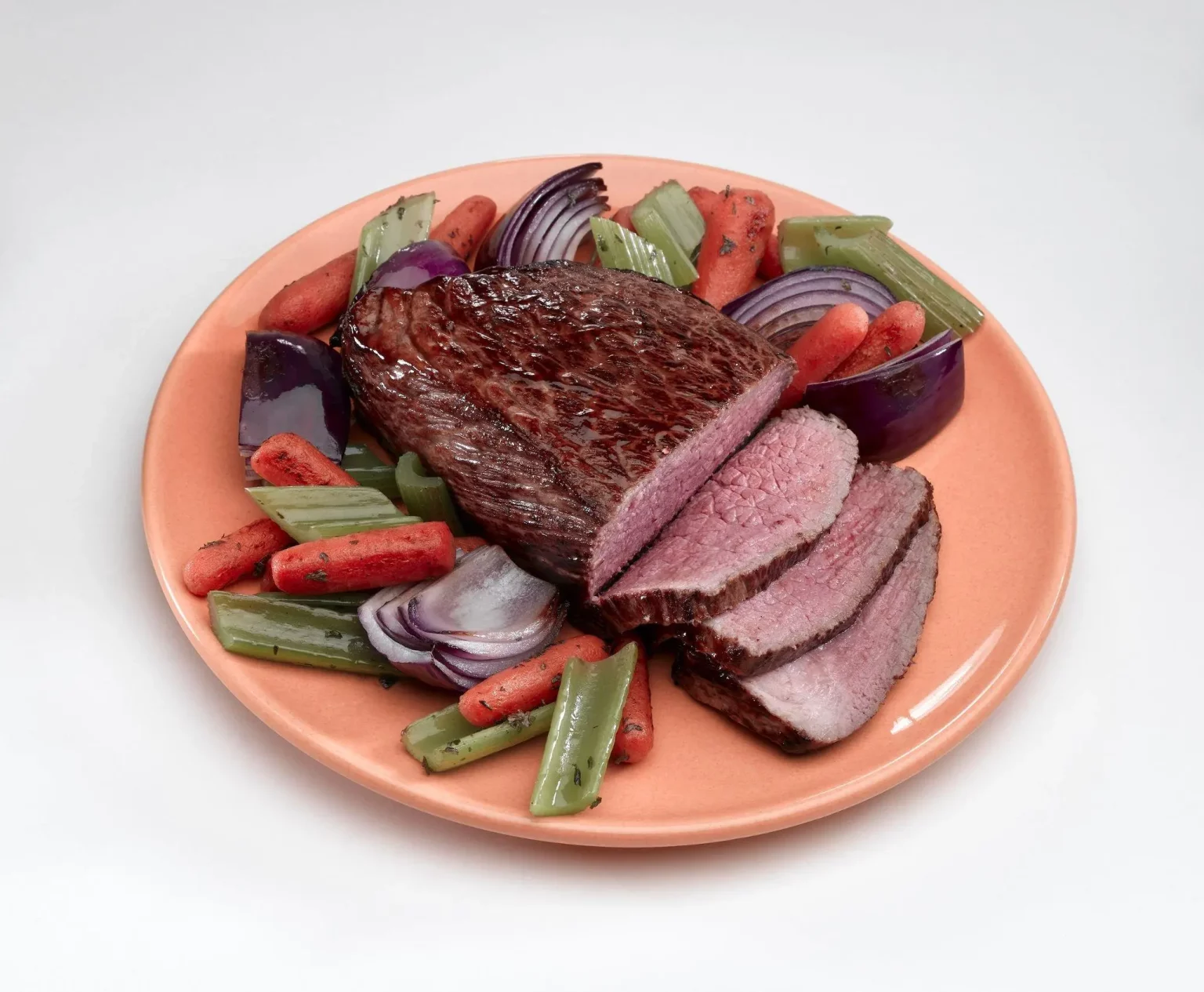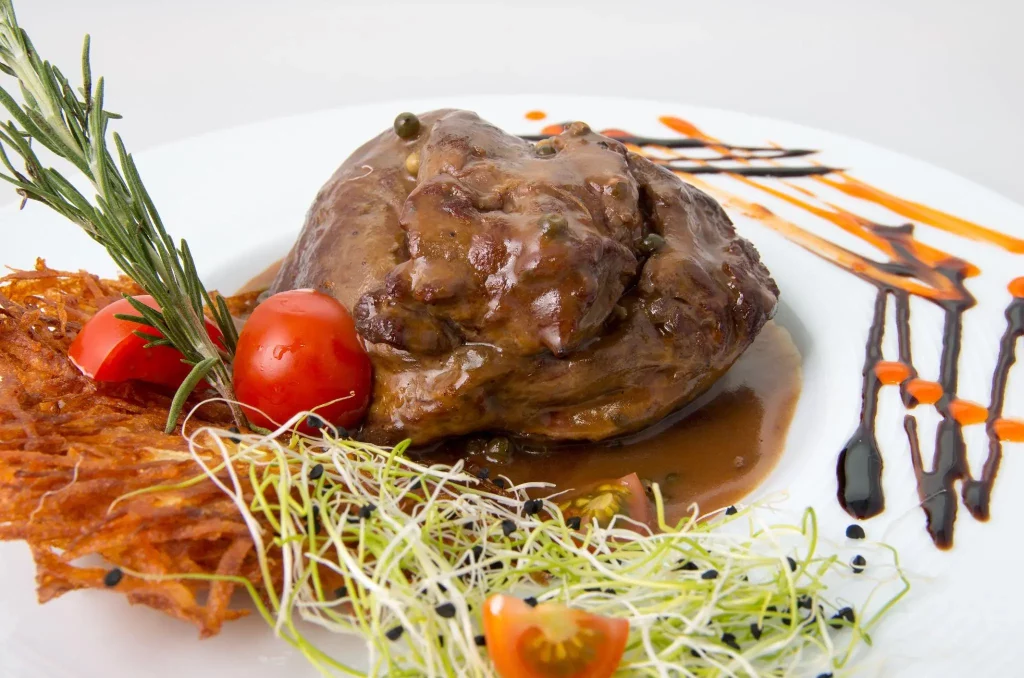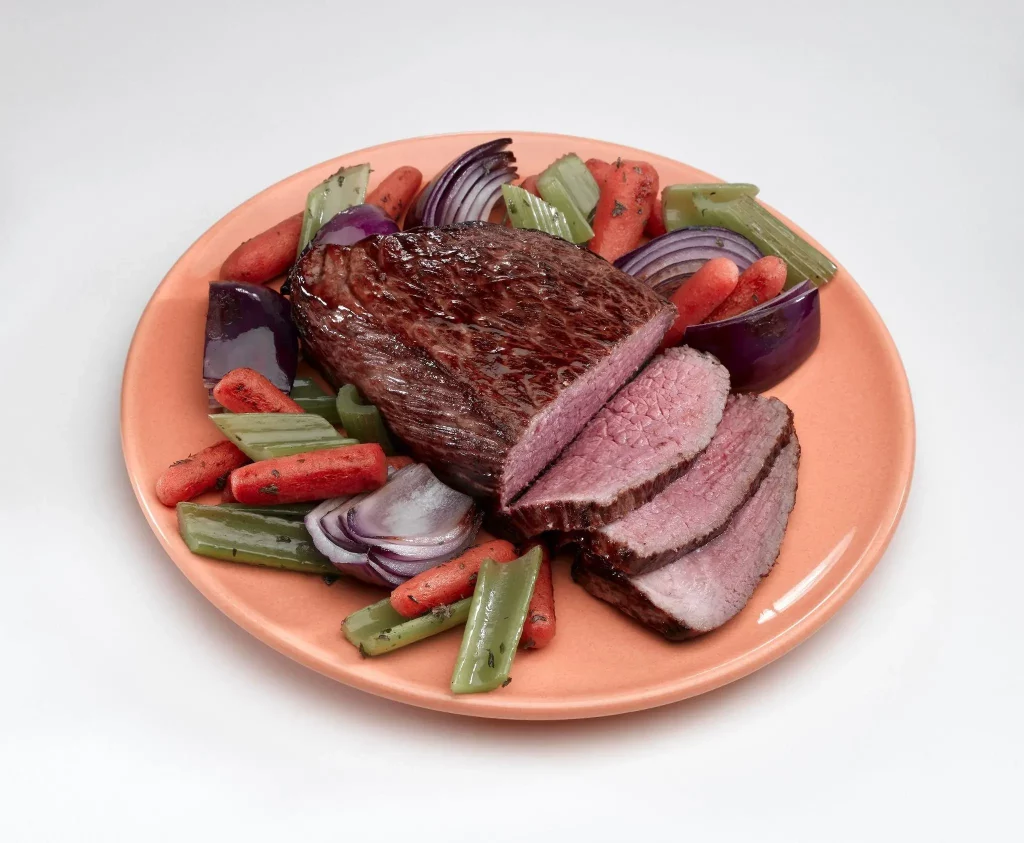Discover how to cook a bottom round roast effectively, a cut known for its unique flavor and texture. While less known than sirloin or ribeye, the bottom round roast offers a lean, beefy taste. Mastering its preparation is key to unlocking its culinary potential. This healthier, low-fat option demands precise cooking methods to ensure tenderness and avoid toughness.
For those new to this cut, exploring the various Beef Cuts Explained can provide valuable insights into its characteristics and benefits. This knowledge is essential for both amateur cooks and seasoned chefs alike, ensuring that every dish made with bottom round roast is not only nutritious but also rich in flavor.
Cooking a bottom round roast is an art that combines skill and patience. The key to unlocking its potential lies in understanding its nature and applying the right cooking techniques. Whether it’s a family dinner or a special occasion, a well-prepared bottom round roast can be the centerpiece of a memorable meal.
Preparing the Roast
The journey to a perfect bottom round roast begins with proper preparation. Selecting the best cut is crucial – look for even marbling and a fresh, red appearance. Before cooking, it’s essential to bring the roast to room temperature, which promotes even cooking. Patting the roast dry and seasoning it generously are steps that should not be overlooked.
When it comes to seasoning, a blend of salt, pepper, and herbs like rosemary or thyme can greatly enhance the roast’s flavor. For those looking to delve deeper into seasoning techniques, exploring various Herbs and Spices can provide inspiration for creating a unique flavor profile.
The preparation stage sets the foundation for a delicious roast. It’s a process that requires attention to detail, from the moment you select the cut to the final seasoning touches. By following these steps, you ensure that your bottom round roast is primed for cooking perfection.
Seasoning and Marinating
Seasoning and marinating are pivotal in transforming a simple bottom round roast into a culinary delight. The choice between dry rubs and marinades can significantly influence the final taste and texture of the roast. Dry rubs, typically a mix of herbs and spices, create a flavorful crust, while marinades, combining acid and oil, tenderize and infuse the meat with deeper flavors.
A well-balanced seasoning blend can include garlic powder, onion powder, and classic herbs like rosemary or thyme. For those adventurous in the kitchen, experimenting with different combinations can lead to exciting new flavors. Additionally, incorporating a rub made from kosher salt, black pepper, garlic powder, and paprika can add a rich and savory dimension to the roast.
Understanding and mastering the art of seasoning and marinating is key to elevating the taste of your bottom round roast. It’s an opportunity to get creative and tailor the flavors to your liking, ensuring that each roast you prepare is not only tender and juicy but also bursting with flavor.
Cooking Techniques
Cooking a bottom round roast to perfection involves choosing the right technique. Each method, whether roasting, braising, or slow cooking, offers unique benefits and flavors.
- Roasting: This traditional method involves cooking the meat in an oven at a high temperature. Preheat your oven and cook the roast for about 20 minutes per pound, ensuring it reaches the desired internal temperature. Using a meat thermometer is crucial for accuracy.
- Braising: This technique involves searing the meat and then cooking it slowly in a liquid in a covered pot. It’s ideal for tenderizing tougher cuts and infuses the roast with the flavors of the cooking liquid.
- Slow Cooking: Perfect for those with a busy schedule, slow cooking involves cooking the roast on low heat for several hours. This method is excellent for achieving a tender, fall-apart texture with minimal effort.
Each technique has its own set of guidelines and tips. For instance, when roasting, it’s important to allow the meat to rest before carving. This ensures the juices redistribute, resulting in a more tender and flavorful roast. In braising, the choice of liquid (like broth or wine) can greatly affect the taste. And in slow cooking, trimming excess fat can prevent the roast from becoming greasy.
Choosing the right cooking technique for your bottom round roast depends on your taste preferences and the desired outcome. Whether you prefer a classic roasted flavor or a tender, slow-cooked texture, there’s a method that will suit your needs.
Achieving the Perfect Roast
Achieving the perfect bottom round roast is a balance of temperature control, moisture retention, and careful monitoring. The key to a juicy roast lies in not overcooking it. Maintaining the right internal temperature is crucial, as overcooking can lead to a dry and tough texture. Conversely, undercooking can result in a roast that’s too rare for some tastes.
To ensure juiciness, basting the roast regularly with its own juices can be beneficial. This technique helps keep the meat moist and enhances its flavor. Additionally, covering the roast with foil during cooking can help trap moisture, preventing it from drying out.
Letting the roast rest after cooking is another critical step. This allows the juices to redistribute throughout the meat, resulting in a more tender and flavorful roast. A rest period of 10-15 minutes is typically sufficient.
By paying attention to these key factors, you can achieve a bottom round roast that is both tender and juicy. It’s a process that requires patience and precision, but the result is a deliciously cooked roast that will be the highlight of any meal.
Resting and Carving
The final steps in preparing a bottom round roast are resting and carving, which are crucial for achieving the best texture and flavor. After cooking, it’s important to let the roast rest. This pause allows the meat to relax and the juices to redistribute evenly, resulting in a more succulent and tender roast.
Cover the roast with aluminum foil and let it rest for about 15 minutes. This step is essential for locking in the moisture and ensuring that every slice is juicy and flavorful. When it’s time to carve, using a sharp knife is key. Slice the roast against the grain into thin pieces. This technique ensures that each slice is tender and easy to chew.
For those looking to perfect their carving skills, exploring resources on Meat Carving Tips can be incredibly helpful. It’s not just about slicing the meat; it’s about doing so in a way that maximizes tenderness and presentation.
Resting and carving are as important as the cooking process itself. They are the final touches that ensure your bottom round roast is not only cooked to perfection but also presented in the most appetizing way possible.
Serving and Accompaniments
Serving a bottom round roast is an opportunity to showcase your culinary skills. The right accompaniments can elevate the dish from a simple roast to a gourmet meal. Classic sides like mashed potatoes or roasted vegetables complement the rich flavors of the meat. A light green salad with a tangy dressing can balance the hearty flavors of the roast.
When it comes to sauces, options like horseradish, mushroom, or red wine sauce can enhance the taste of the roast. A well-made gravy can also add a comforting and classic touch to the dish. Experimenting with different side dishes and sauces can help you find the perfect combination for your taste preferences.
For those looking for inspiration, exploring Roast Beef Serving Ideas can provide a wealth of creative and delicious options. The presentation is key, so take the time to arrange your dishes in an appealing way, ensuring that your bottom round roast is not only delicious but also visually enticing.
Serving the perfect bottom round roast is about more than just the meat. It’s about creating a harmonious meal that delights all the senses. With the right sides and sauces, your roast can be the centerpiece of an unforgettable dining experience.
Storing and Reusing Leftovers
Properly storing and reusing leftovers is an important aspect of cooking a bottom round roast. To maintain freshness and flavor, store the leftover roast in an airtight container in the refrigerator. It can be kept for up to 3-4 days. When it comes to reheating, gently warm the slices in the oven or in a skillet to preserve their moisture and tenderness.
Leftover roast beef is incredibly versatile and can be used in a variety of dishes. From hearty sandwiches and sliders to flavorful soups and stews, there are numerous ways to repurpose your roast. For those looking for creative ideas, exploring Healthy Side Dishes can provide inspiration for pairing your leftovers with new and nutritious options.
Storing and reusing leftovers is not only economical but also a way to enjoy your delicious roast in new and exciting ways. With a little creativity, you can transform leftover bottom round roast into a range of tasty meals.
FAQs
At what temperature should I cook my Bottom Round Roast? Cook your roast at a low temperature, around 275°F, to allow the meat to cook slowly and evenly.
How long does it take to cook a Bottom Round Roast? The general rule is about 20-25 minutes per pound. However, using a meat thermometer is the most accurate way to determine doneness.
Should I cover my Bottom Round Roast while it’s cooking? Yes, covering your roast with aluminum foil for the majority of the cooking time helps keep it moist. Remove the foil in the last 30 minutes to allow the outside to brown.
How should I serve my Bottom Round Roast? Let the roast rest for at least 10 minutes before slicing against the grain for maximum tenderness. Serve with your favorite side dishes like mashed potatoes or vegetables.
Can I use Bottom Round Roast for leftovers? Absolutely! Leftover roast can be used in sandwiches, soups, and stews. Store it properly in the refrigerator to maintain freshness.



